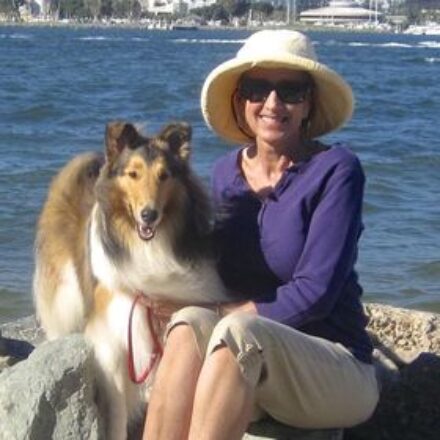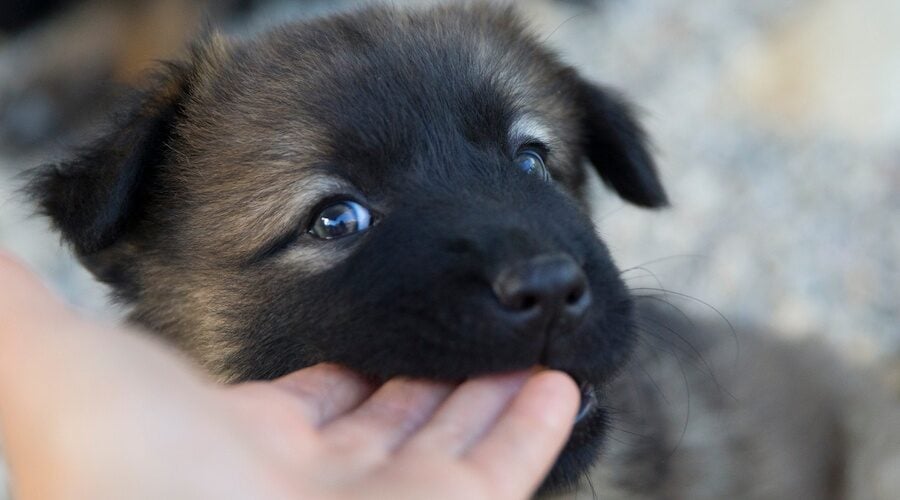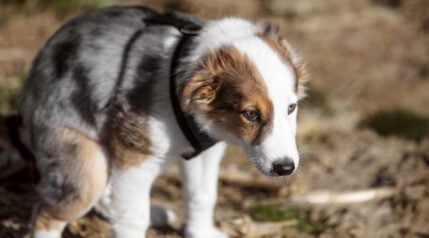Does your puppy chew slippers? It’s natural for dogs to put things in their mouths. It feels good. They eat with their mouths. They drink with their mouths. They even play using their mouths.
The problem is that they want everything in their mouths. Your job is to teach your dog which things are okay to chew on.
Let’s look at some of the most common behaviors that dog owners want to stop, as well as the easiest way to get your dog on the right path to leaving their naughty behavior behind them.
No More Chewing Quiz
Here’s a quiz. Your adorable puppy has a brand-new slipper in his mouth. What should you do? Choose the right answer below. Only one answer is correct.
- Scream, “No! Give me back my slipper!”
- Yell, “Bad dog!” and put your dog in your bedroom.
- Chase your dog until you catch him, and take the slipper.
- Take the slipper and put your dog outside.
- Go get your dog’s favorite toy, then give him the toy as you take the slipper and say, “Thank you!”.
Why Do Dogs Chew?
Dogs use their mouths to play. You should know that your dog is not trying to make you mad. He is just doing what comes naturally. You have to help him learn new ways to entertain himself.
Dogs don’t have much to do during the day. Dogs can’t do what people do to keep busy. They can’t read their favorite book. They can’t watch TV. Try to think of activities for your dog. If he is busy playing with things, he is less likely to go looking for your favorite shoe.
Prevention
- Pretend you are your dog by getting down on your knees and looking around your house. What do you see? Are there things on the floor that would be interesting and fun if you were a dog? How about shoes, pencils, paper clips, clothing, slippers, etc.?
WHAT YOU SHOULD DO: Pick up all objects from the floor and put them where they belong, or put them in a closet and shut the door. - Look around your house. Do you see a door that is open? What’s on the other side of that door? Is it a closet with lots of cool things on the floor? Or is it a bedroom with sweet-smelling socks that are easy to reach?
WHAT YOU SHOULD DO: Close all doors that lead to trouble. The best thing to do is close all doors except for the room you are in. If your dog is having behavior problems, he should be supervised at all times. - Look at the furniture in your house. Do you have furniture that is appealing to a chew-happy dog? Most furniture is. Are the legs made out of tasty wood? Does the sofa have an inviting, tempting upholstery (the cloth or leather that covers your couch)?
WHAT YOU SHOULD DO: Decide with all of your family that you will not leave your puppy alone in the house until he is grown up (maybe 2 years old!) and knows his manners. You will not leave him alone even for an hour. If you leave the house, you will put your dog into a crate, a pen, a bathroom or utility room, or leave him outside.
How To Prevent Chewing
Remember, the 3 steps to prevent chewing are:
- Pick everything up off the floor.
- Close all doors and cupboards that lead to trouble.
- Do not leave your dog alone until he is a trustworthy adult.
Toys Help
Now that you’ve taken away the things you don’t want your dog to chew, it’s important to replace them with the things he can chew on.
Dogs need toys to play with that satisfy their chewing needs. They may need to chew for teething, attention, or just being plain bored. Go to the store and find the type of toy your dog likes. It may be bones, plastic or vinyl toys, or fluffy sheepskin toys. Toys that give your dog something to do are well worth the money that they cost.
Chew Toys
Dog bones are always a good go-to. There are many different kinds of dog toys made of many different materials, and your dog’s chewing capabilities will likely dictate which are best for your home. Unbreakable toys can offer a more sustainable option for power chewers. However, no matter what toy is given, always keep a close eye on them to make sure they don’t swallow a piece that breaks off. Take it away promptly if you notice they are ingesting any part of the toy.
A Kong can be filled with food, and your dog will have fun trying to get it out. Also, try stuffing your Kong with treats or peanut butter.
For teething puppies and young dogs, you may try getting creative. You can make your own chew toys for your puppy. Take a clean washcloth and soak it with water. Then twist it real tight. Put it in the freezer. Later, after it’s frozen, give it to your puppy to chew on. It will numb his sore gums, and he will feel better. (Always supervise your dog and do not allow him to shred and eat the cloth.)
Toys To Avoid
Cow hooves are typically unsafe because they can have sharp edges. Rawhide can be safer if you sit with your dog while he chews it. However, sometimes the pieces get soft and can bend and can get stuck in the dog’s throat. If you supervise your dog when he chews rawhide, this shouldn’t happen.
Chicken or steak bones leftover from dinner can choke your dog or break and cause damage to the inside of his body. Visit your favorite pet store to find special bones that are safe for your dog to chew.
Other Tips
So, your puppy has a slipper in his mouth. How do you handle it? The best way is to remember that it is natural for dogs to chew. Don’t chase your dog. Just trade the slipper for a toy he likes, and as you trade, say, “Thank you, puppy!”
Your dog may make a game of it and start bringing you things. No worries. Just play the game, and it is unlikely your dog will chew the things he is bringing to you.
When we see a cute pup walking down the street, our first reaction may be to run up and pet him. You must remember that even though he may look kind and gentle, he may be anxious, nervous, or just having a bad day.
Just like us, we wouldn’t want to be startled or caught off guard, or we too may snap at the well-intended greeter. How you approach any dog can make or break first impressions, so it’s important to know when and how to approach it.
Any dog can bite at any time, and depending on the situation, it could be a friendly, nervous, warning, or aggressive bite. The best way to know if a dog is about to bite is to be aware of his surroundings and his body language. Body language is the way a dog’s body looks and acts. Understanding body language will help protect you. Below are examples of different body language.
Become A Mind-Reader
Some of these dogs look friendly, but all of these dogs can bite. Take some time to learn some body language, and you will understand more of what the dog is thinking.
An intimidated dog can be dangerous. This dog is intimidated. He feels threatened and cornered. Notice his tail. Don’t approach this dog.
A worried dog can be dangerous. This dog is worried. He feels concerned about what will happen next. Don’t approach this dog.
An aggressive dog is dangerous. This dog is aggressive. He is ready to bite. Don’t approach this dog.
A dominant dog can be pushy and dangerous. This dog is dominant. He thinks he is the boss and in charge. Don’t approach this dog.
A dog that’s afraid can be dangerous. This dog is afraid. How do you know? Look at his tail. He will do anything to protect himself. He will not feel better if you try to pet him. Don’t approach this dog.
Take a good look at the dogs above and remember that if you get too close, they might bite. Be sure to notice their tails and the expressions on their faces. Which dog do you think is the most dangerous?
The dog that is afraid is the most dangerous. Can you think why?
Another thing… Even happy and playful dogs can bite. Play bites hurt as much as real bites. If the dog does not belong to you, please respect his space and leave him alone.
Teach Speak
Choose a game that your dog loves to play, like catch with a ball or hide and seek with a toy. Then get him excited by saying, “Let’s play! Want to play?” and show him the ball or toy. Jump and act silly, so he barks and then say, “Good dog, speak!” Then play the game as his reward for learning “Speak.”
Tip: Caution! If you have a dog that already causes trouble because of his barking, you might not want to encourage this behavior. If you decide it’s ok to teach it, be sure to teach “Quiet,” too, not necessarily at the same time.
Teach Quiet
This is easiest if your dog already knows how to speak. Tell your dog to Speak or catch him when he is barking. Get right in front of him and say, “Quiet.” The second he stops, even if it is to take a breath, give him a treat. You might want to hold your hand or palm in front of his face to add a visual signal. Practice playing ‘quiet’ often, and your dog will be loving the word “Quiet”.
Tip: As you teach your dog Quiet, gradually increase the quiet time from 2 seconds to 5 seconds or more. Then, when he understands the trick, make a game of it. Tell him to “Speak,” “Speak,” “Speak,” and then “Quiet.” Then “Speak” again. It’s a great trick that will entertain your friends, and your pup will look so smart! Many people prefer to teach these two tricks at different times.
No More Digging!
Some dogs love to dig.
Dogs dig for lots of reasons. Your dog may dig because he was bred to be a digger, like a terrier. He may dig because he is hot and wants to lie down in the cool dirt. And he may dig because he is so bored that he can’t think of anything else to do.
Dogs don’t have much to do during the day. Dogs can’t do what people do to keep busy. They can’t read their favorite book. They can’t watch TV. Try to think of activities for your dog. If he is busy playing with things, chewing on a bone, or tired from a long walk, he’s less likely to start digging.
Some dogs dig because they’re bored.
Lots of puppies like to dig. It feels cool and fun on their little feet. It’s kind of like kids when they play with finger paints. What fun! Don’t panic if your puppy has dug a few holes in your parent’s yard. Explain to them that he might be doing that just because he’s a puppy.
Tell them you’re going to give the pup other things to do so that he won’t feel like digging anymore. Many pups will stop digging on their own. But it’s still a good idea to entertain your puppy with other activities.
The more a dog or puppy is left outside alone, the more he will look for things to do. And those things may not make your parents very happy.
Your goal is to give your dog lots of exercise, lots of company, and lots of interesting things to do. Make a list of things that will give your dog something to do besides dig:
- more exercise
- walks
- play fetch
- hide and seek
- running games
- more games
- lots of time with you
- some interesting toys
- tasty, fun things to chew on
Grown dogs can become just as bored as puppies. All dogs need interesting things to do to have a happy and healthy life. Spend lots of time training your dog, and you will start to see good changes in his behavior. Dogs become bored if left alone too much.
For dogs who are digging just to keep cool on a hot day, the remedy is easy. Provide lots of cold water and a lot of shade. The more comfortable your dog is, the more relaxed he’ll be. And instead of digging, he may just lie down and take a nap.
Dogs who have a strong instinct to dig may be harder to train. It may be easier just to let him dig but in a more acceptable place.
Find an area of your yard that is OK for digging. You might want to put up a pen or a fence to surround the area. This would be your dog’s special place. Put the pen in an area filled with dirt or sand so that it’s a more inviting place to dig.
Some dogs need a special digging place. To train your dog to dig there, you might start by burying a special treat or bone while your dog watches. When he digs it up, praise him. Do this each day until he gets the idea.
Be creative and surprise him with interesting treasures. If he starts to dig in another area of the yard, take him directly to his special place and tell him he’s a good dog.
You should know that your dog is not trying to make you mad. Dogs don’t do that. They are just doing what comes naturally or what helps them feel better. You have to help him learn new ways to be comfortable or to entertain himself.
Remember, the steps to stop digging are:
- Give your dog lots and lots of exercise. Tire him out!
- Bring your dog in the house more.
- Spend lots and lots of time with your dog.
- Make sure your dog has toys that he plays with.
- Give your dog a cool, comfortable place to spend his time.
- If he still digs, try making him a special digging place.
Final Thoughts
Hopefully, these tips will help you ensure that your favorite furry friend stops doing the things you don’t want him to do. Remember that all dogs benefit from reward-based reinforcement. While corrections need to happen, they should be trained in a balanced approach.
The last thing you want them to do is to associate a correction with good behavior. Be careful in how you implement your training, and always consult a professional trainer if you have questions.





